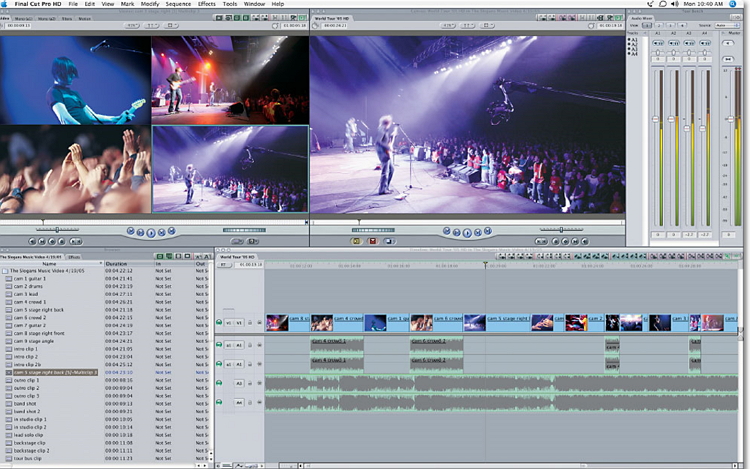

If it does, you’ve done it!Īll you need to do now is click the Next button at the bottom right corner of the dialog box and a Finder window will open so you can select where on your computer you want to save your shiny new original.
#Export final cut pro mp4#
mp4 file being exported, only Computer.īut, once you’ve selected Computer the Export File dialog box should now look like the screenshot below, and the file extension shown at the bottom of the screen (see the red arrow in the screenshot) should now read “.mp4”. Note that NO other option will result in an. In the menu that drops down, which is shown in the screenshot below, select Computer.

From here, we want to change the Format option, by clicking on the Format drop-down menu, identified by the big red arrow in the screenshot. The dialogue box should now look like the screenshot below. Here you can enter the title of your move, enter a description, and so on.īut we want to switch to the Settings tab (which the red arrow is pointing at in the screenshot), so click on Settings. Step 2: Switch to the Settings TabĪfter you select “Export File”, a dialogue box will pop up that looks like the screenshot below. But “Export File” should always be there and near the top of the list. Note that your list may look slightly different than mine because you can add your own custom formats to this list. From the menu, you want to choose the second item “Export File (default)”.
#Export final cut pro pro#
The Sharing menu appears when you click the sharing icon in the top right corner of the Final Cut Pro window. Step 1: Select Export File from the Sharing menu Final (Vaguely Conspiratorial) Thoughts.Step 1: Select Export File from the Sharing menu.Find out more about Combo Scenes, remixing your videos and creating dynamic content in our latest release. With the magic canvas, your multi-camera videos just got a whole lot more interesting.

Record stunning multi-cam video with magic canvas in Detail You can also import XML files by double-clicking them in the Finder or dragging them to the Final Cut Pro app icon.įinal Cut should import the XML and generate the corresponding clips, events, projects, and library, from your Detail timeline. To import your XML file into Final Cut, choose File > Import > XML in the Menu Bar, then, in Finder, select the FCPXML file you want to import and click Import. There’s a bug in Cut mode that causes the import to be slow or fail. We recommend importing your video in Edit mode in DaVinci. Your multi-camera video should appear in DaVinci, synced up and ready for editing. To import the timeline file into DaVinci, click on File > Import Timeline… select the FCPXML file in Finder, click Open and then Ok. Importing your timeline to DaVinci Resolve This will export the file to your Detail Library. To use this new feature just click on “Timeline” in the menu bar and select “Export Source video as FCPXML”. Note: any text or image overlays you added in Detail won’t be included in the export.Įxporting your multi-camera timeline in Detail If you’ve already made cuts and scene switches in Detail, those will be reflected when you import your video into Final Cut or DaVinci. If you’re a pro video producer, this means you can now easily record all of your footage in Detail, then export everything to your preferred video editor as a timeline or multi-cam project. In the latest update, we’ve added a one-click timeline export that saves your Detail timeline as a Final Cut Pro XML file (FCPXML), that can be opened as in Final Cut Pro or imported as timeline in DaVinci.
#Export final cut pro manual#
Previously, you could export these isolated recordings to edit in other video editors like Final Cut Pro, or DaVinci Resolve but it was a manual process and it didn’t include any of your timeline data - like cuts or scene switches. Just connect any cameras you have, set each one up as a separate scene, hit record once and you can shoot perfectly synced multi-cam footage in your timeline. Detail is an incredibly powerful tool for shooting multi-camera video content, without investing in expensive hardware or software.


 0 kommentar(er)
0 kommentar(er)
